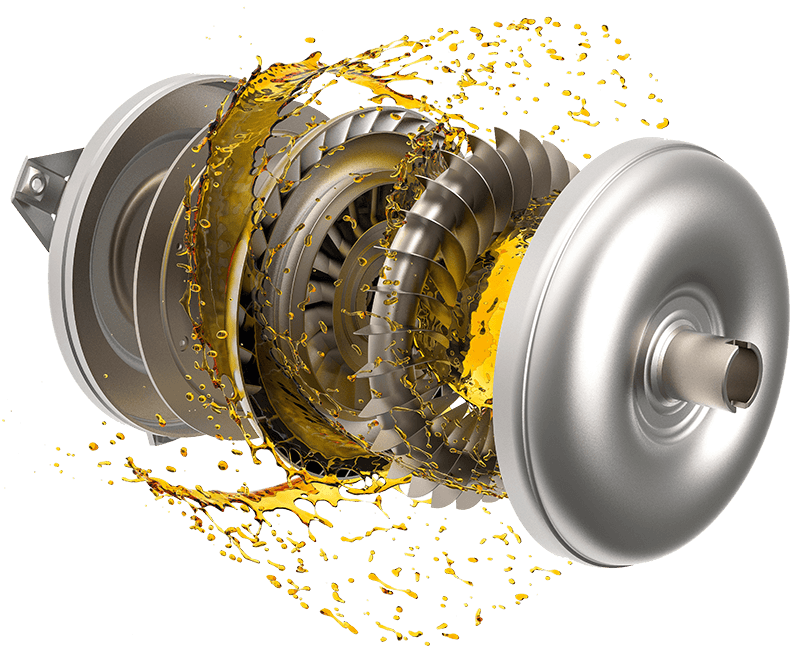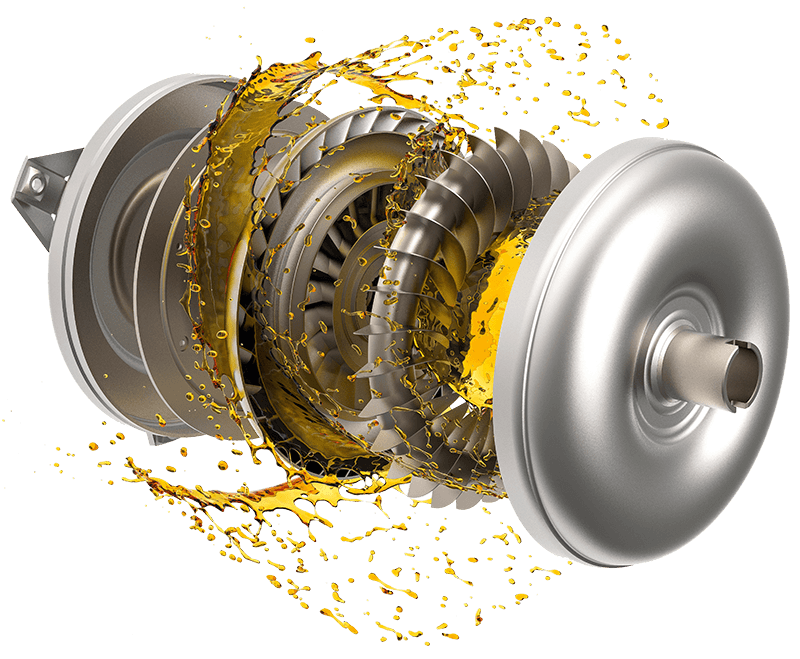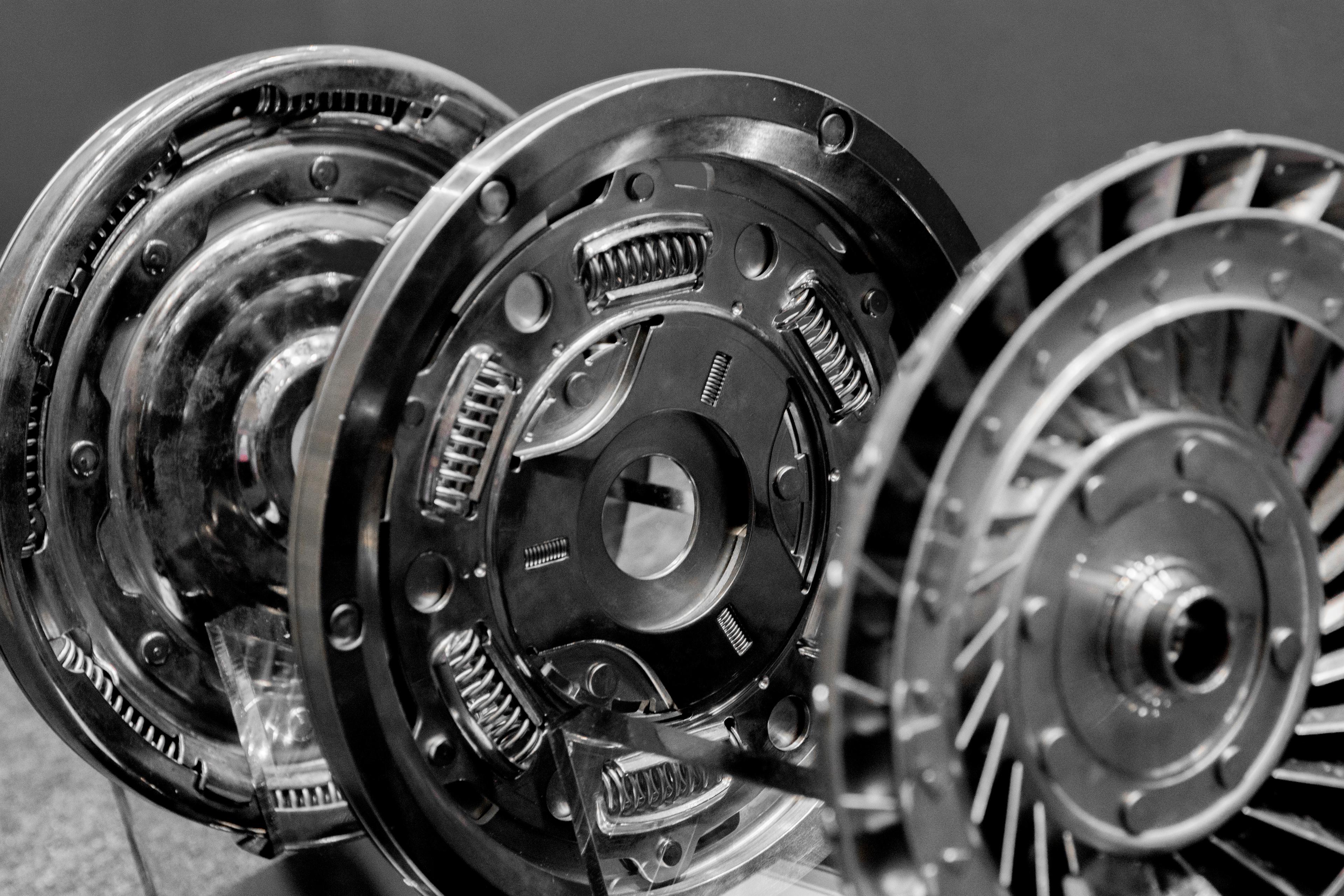Torque Converters for Allison Conversions

Mastering Momentum: The World of Torque Converters
Unlocking the Secrets of Seamless Power Transfer in Modern Vehicles
View CAC Torque Converters
Elevate your Ford or Dodge vehicle's performance with the CAC Torque Converter, specifically designed for the Allison 1000PK Transmission conversion. By merging the unrivaled strength and reliability of the Allison 1000PK with the advanced engineering of our torque converter, you're guaranteed smoother gear transitions, superior torque multiplication, and unmatched fuel efficiency. Transitioning from your stock setup to the Allison conversion is a game-changer, and with the CAC Torque Converter, you'll maximize this advantage, ensuring your vehicle is primed for any challenge, whether it's heavy-duty hauling or everyday driving. Choose CAC, and experience the pinnacle of transmission technology and performance.

What is a Torque Converter?
A torque converter is a type of fluid coupling used primarily in automatic transmissions of vehicles. It transmits power from the engine to the transmission by using transmission fluid to transfer rotational force.
Main Purpose:
The primary purpose of a torque converter is to allow the engine to spin somewhat independently of the transmission. Its key functions include:
- Torque Multiplication: At lower speeds, especially during vehicle startup, the torque converter can amplify the torque provided by the engine, giving the vehicle a smoother and more powerful takeoff.
- Engine Idling: It allows the engine to run and idle while the vehicle is stationary, without stalling, even though the transmission is in gear.
- Smooth Power Delivery: By using fluid dynamics, the torque converter ensures a smooth transfer of power from the engine to the wheels, allowing for smoother acceleration and deceleration.
Overall, the torque converter serves as a bridge between the engine and the transmission, ensuring efficient power transfer while also providing flexibility and protection against stalling.

From Start to Shift: The History and Evolution of the Torque Converter
Delve deep into the annals of automotive history as we trace the origins and advancements of the torque converter. From its humble beginnings as a solution to transmission challenges to its modern-day complexities and prowess, this comprehensive overview sheds light on the pivotal moments, technological breakthroughs, and key players that shaped the torque converter we know today. Join us on this fascinating ride to discover how this integral component has evolved, influencing both everyday commuting and high-octane racing.
- 1900sEarly Beginnings
The concept of fluid coupling, the precursor to the modern torque converter, was introduced in the early 20th century. Engineers aimed to create a device that would allow engines to run at a constant speed while providing variable output speeds.
- 1920s-1930sFirst Fluid Couplings
- German engineer Hermann Föttinger is credited with the first practical design of fluid coupling, which he developed while working on ship propulsion. His invention laid the groundwork for the development of automotive torque converters.
- By the 1930s, fluid couplings started appearing in railroad and automotive applications, providing smoother operations than mechanical couplings.
- 1940sDevelopment of Torque Converters
- Engineers began to expand upon the concept of fluid couplings by introducing a third component, the stator. This modification allowed for torque multiplication, a distinct advantage over simple fluid couplings.
- General Motors introduced the first torque converter for automotive applications in their "Hydra-Matic" transmission, setting a precedent for the auto industry.
- 1950s-1960sMainstream Adoption
- The benefits of torque converters in automatic transmissions—like smoother gear shifts, improved fuel efficiency, and the ability for engines to idle in gear without stalling—led to their widespread adoption.
- Innovations during this period focused on refining designs, improving durability, and enhancing efficiency.
- 1970s-1980sEfficiency Improvements
With the oil crisis and increased emphasis on fuel economy, engineers introduced the lock-up torque converter. This design featured a clutch mechanism that could lock the turbine and impeller together at certain speeds, eliminating energy losses and improving fuel efficiency.
- 1990s-PresentModern Advancements
- Continuous improvements in materials and design have made modern torque converters more compact, efficient, and durable.
- Integration with advanced transmission control units and systems has enabled better synchronization between engine and transmission operations.
- Developments in the realm of hybrid and electric vehicles have also seen unique adaptations of torque converter technology or alternative solutions.
- Current Trends
With the rise of electric vehicles, which don't require traditional transmissions, the role of the torque converter is changing. However, it remains a crucial component in many hybrid systems and conventional vehicles.
Torque Converters Demystified: The Power Behind the Shift

Torque converters offer a range of benefits, especially when compared to direct mechanical couplings or other transmission solutions. Here are the primary advantages of using a torque converter:
Seamless Acceleration: The fluid coupling ensures there are no abrupt jerks or sudden movements during acceleration, offering a smooth ride. Transition between Gears: In automatic transmissions, the torque converter allows for smoother transitions between gear shifts compared to manual transmissions.
Enhanced Starting Power: At low speeds, the torque converter can amplify the torque produced by the engine. This gives vehicles, especially heavy ones, a powerful and smooth takeoff from a standstill. Adaptive to Load: Torque converters can adjust to varying loads, ensuring that machinery or vehicles always have the needed force for the task at hand.
Idling in Gear: A vehicle equipped with a torque converter can idle in gear without stalling the engine. This is particularly beneficial in stop-and-go traffic situations. Protection under Strain: Even under heavy load or uphill conditions, the torque converter helps prevent the engine from stalling.
Broad Range of Applications: From vehicles to industrial machinery, torque converters can be used in a wide variety of settings due to their versatility. Works Across RPM Ranges: They allow engines to operate within their optimal RPM range, ensuring efficient performance regardless of the load or condition.
Reduces Shock Loads: By acting as a buffer, torque converters can absorb and dissipate shocks, protecting the drivetrain from sudden forces or loads. Isolates Engine Vibrations: Vibrations from the engine are dampened by the fluid coupling, ensuring they don't transfer directly to the transmission and chassis, resulting in a smoother ride.
Lock-up Mechanism: Many modern torque converters come equipped with a lock-up clutch. When engaged, this clutch provides a direct mechanical connection between the engine and the transmission, reducing energy losses and improving fuel economy during cruising speeds.
Ease of Use: In vehicles, the automatic transmission paired with a torque converter simplifies the driving process, eliminating the need for manual gear shifting and clutch operations.
How to determine the Right Torque Converter
Maximizing Performance: Using Tire Diameter and Gear Ratio Calculations to Choose the Ideal Torque Converter

FAQ'S
Are Automatic transmissions are less fuel-efficient than manual ones?
While this might have been true in the past, advancements in automatic transmission technology and the inclusion of lock-up clutches in modern torque converters have significantly reduced the efficiency gap. In many cases, modern automatics can even outperform manuals in terms of fuel efficiency, especially when drivers don't operate manuals optimally.
Do torque converters make the driving experience numb and disconnected?
The feel of a torque converter might be different than a direct mechanical connection, but it offers a smooth and responsive driving experience. Furthermore, many high-performance vehicles use automatic transmissions with torque converters, proving that spirited driving and torque converters aren't mutually exclusive.
Are automatic transmissions with torque converters are more prone to failures?
The durability of a transmission system depends more on its build quality, maintenance, and usage than the mere presence of a torque converter. Many torque converter systems are designed to handle high-torque situations and have proven their reliability over millions of miles.
Does the fluid in torque converters overheat easily?
While it's true that the fluid can generate heat, especially under strain, modern vehicles are equipped with sophisticated cooling systems to handle this. Regular maintenance and using the correct transmission fluid ensure that overheating isn't a concern.
Do torque converters make vehicles slower?
Torque converters actually multiply torque, providing vehicles with powerful take-offs. This is especially noticeable in heavy vehicles or those under load. Many high-performance vehicles equipped with automatic transmissions can achieve faster 0-60 mph times than their manual counterparts.
Isn't maintenance and repairs for automatic transmissions are more expensive?
While some repairs can be costlier for automatics, the overall maintenance might be comparable or even less than manual systems, especially when considering clutch replacements in manuals. Plus, the convenience and benefits of automatics often outweigh potential repair costs for many users.
Aren't CVTs superior to traditional automatics in every way?
While CVTs offer certain advantages, like smooth operation and potentially better fuel efficiency, they might not provide the same level of durability in high-torque situations. Also, many drivers prefer the traditional feel of gear shifts that torque converters paired with automatic transmissions provide.
